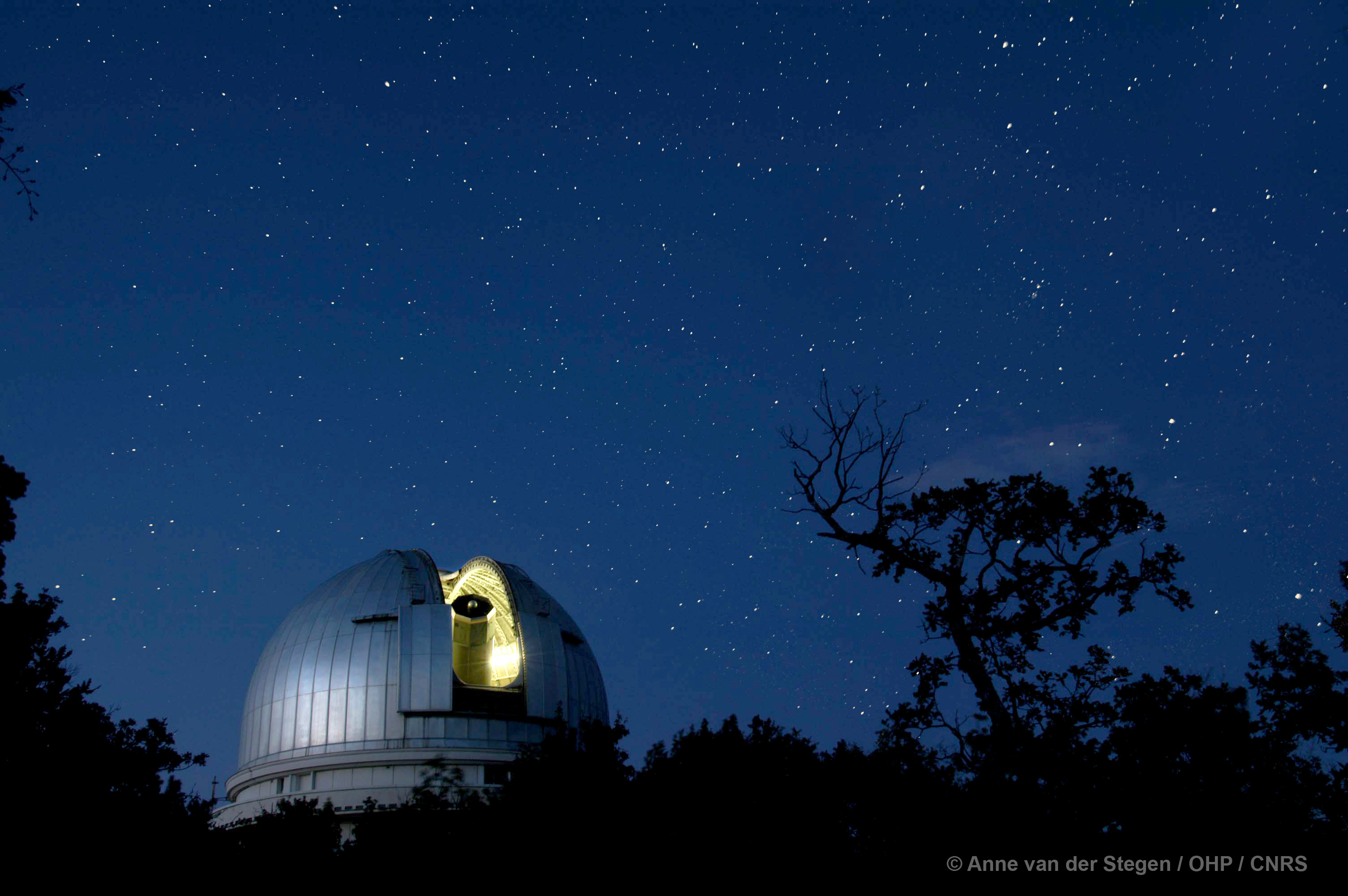A sister of the Earth in a nearby system

Barely three times larger than the Earth, this new planet is the third closest to our solar system ever discovered.
An international team of astronomers, including researchers from the University of Geneva and PlanetS, has discovered the third closest exoplanet to our solar system. This detection was obtained thanks to the SOPHIE spectrograph, developed in part by the Astronomy Department, of the University of Geneva installed on the 193cm telescope of the Observatoire de Haute Provence. This planet, whose minimum mass is three times that of the Earth, orbits the GI411 star, eight light years from the Solar System, in the Great Bear constellation.
Scanning the atmospheres of extrasolar planets, especially those resembling the Earth, is one of the main objectives of astronomy in the coming decades. This objective is all the more difficult to achieve when the planet is small. “In the coming years, observations to analyse the atmospheres of Earth like exoplanets will only be possible if the exoplanet is close to us,” explains Nathan Hara, co-author of the paper and member of PlanetS. “The planet we discovered, GI411b, is the third closest exoplanet to our solar system known to date. Its proximity and brightness make it an ideal target for future giant telescopes such as the European ELT, which should allow us to analyze its atmosphere,” adds Rodrigo Diaz, a researcher at the University of Buenos Aires and the study’s first author.

The 1.93m telescope of the Observatoire de Haute Provence (OHP). Credit: Anne Van der Stegen OHP/CNRS
The detection of GI411 is the result of a research program to find planets orbiting around “red dwarf” stars, whose mass is approximately half that of the Sun. Why look for planets around these types of stars? “Dwarves represent 80% of the stars in our galaxy, and are therefore in the majority among the stars surrounding our solar system explains Nathan Hara. Moreover, the lower mass of these types of stars makes them more sensitive to the gravitational influence of a possible planetary component, which makes them easier to detect.” To search for planets, the group of astronomers who performed the detection uses the SOPHIE spectrograph, which was put into service twelve years ago. This instrument is installed on the 193cm telescope of the Observatoire de Haute Provence, the same telescope that allowed the first extra-solar planet to be discovered by Michel Mayor in 1995.
A planet too close to its star to be habitable
By accurately measuring the speed of the GI411 star at 155 different times over several years, SOPHIE detected very small movements of the star. An in-depth study has shown that they are caused by a planet, while it follows its orbit around the star. The most likely orbital period is 13 days, which implies a distance between the planet and the star equal to 0.08 AU (Astronomical Unity equal to the distance between the Earth and the Sun): GI411b is therefore five times closer to its star than Mercury is to our Sun. Although the GI144 star is much colder than the Sun, its planet is so close that it receives 3.5 times more energy than the Earth. The planet GI411b is therefore not located in the living area of its star and it is likely that it has more in common with Venus than with the Earth. Studying planets like GI411b should help to understand the atmospheres of planets near their stars.
The original press release of the University of Geneva (in french):
The DOI: arxiv.org/pdf/1902.06004.pdf
Categories: News

